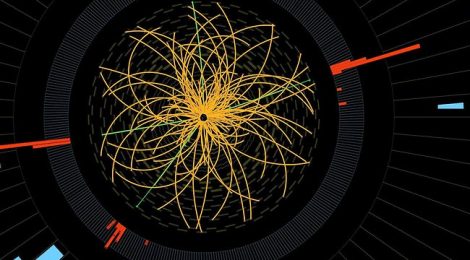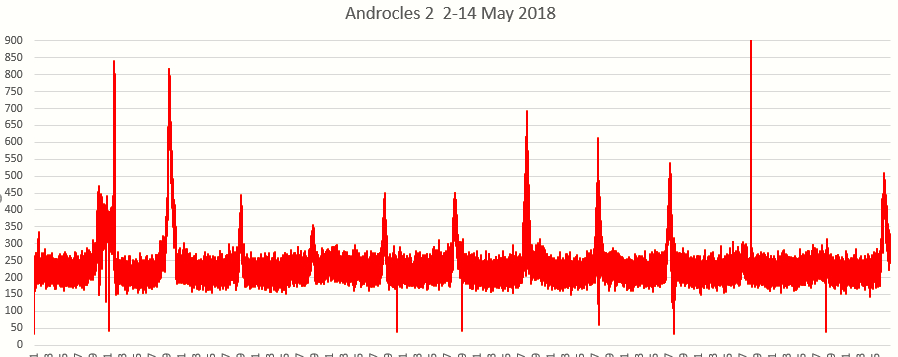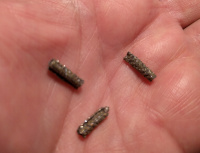
God’s Particle Zoo – Of Muons, Men, And Mysteries
Our universe is filled with an endless/infinite rain of sub-atomic particles
Cosmic rays are constantly stimulating more mysteries than answers
Some hope that this cosmic particle zoo won’t continue to be added to as its taxonomy is already almost too complex to conceive
Others simply marvel at the appearance of new discoveries as seeking to understand them is an opportunity for endless wonder.
For mainstream big-money science and physics, the place to be is thought to be the exclusive environment of big facilities. One such facility is so big it occupies the territory of Switzerland and France. Some working there refer to its miles of tunnels as the $50+ billion dollar rabbit warren that is the CERN particle accelerator. There the search for the biggest of prizes in physics has been for the Higgs boson – the God Particle.
The Higgs boson is believed to be the most vital component of our universe and some even theorize it gives all other particles their mass or very substance. Could it be the GOD particle, the progenitor of all. Having made a series of monumental discoveries the CERN spokeswoman says of new discoveries about the nature of the Higgs, “We haven’t yet confirmed exactly how it interacts — or even if it interacts — with all the particles we know about.” Here are some of the details that explorations of the sub-atomic particles in the atom-ecology of the universe offers.
Young man, if I could remember the names of all these particles, I would have been a botanist. Enrico Fermi 1963
With the God particles in hand, the target of decades of planning, billions in building and operating, what’s next for CERN.
Upping the ante in the game the spokeswoman then throws onto the table and the quest, the idea that the once mysterious now captive God particle might interact with something even more mysterious. What if “it interacts with dark matter particles which remain to be detected,” says the spokeswoman for CERN.
Today at CERN, the Large Hadron Collider and CMS teams jointly announced the observation of the Higgs boson which they first glimpsed in 2012 produced from the collision of accelerated protons is seen to be transforming into bottom quarks as it decays. This has been predicted by theory to be the most common destiny for the Higgs but it has been a difficult finding the proof as the noise in the experiments closely mimics the subtle signal. Time will tell.
Of course, there could be something completely different that the teams at CERN have missed, but you’ll have to read on to make that discovery.
Meanwhile here’s my all-time favourite Geek video about Particle Physics or what I prefer to call Atom-Ecology
“We’re about to drop some particle physics in the glove, the things that we discover will rock you in the head, oh yeah…”
How man measures God
After years many years of refining, rebuilding, repairing, over and over again and at long last running smoothly… the experiments CMS and Atlas finally saw the fleeting evidence it was built for, that of the Higgs decaying to bottom quarks.
The number of Higgs, God particles, inferred by observations at CERN amount to about 20,000 per day or 15 per minute. Over the years the total adds up to mere hundreds of thousands that were examined and used to meet the Golden Rule of Physics, the 5-sigma threshold of statistical significance typically required amongst the hard-nosed physics community to claim a discovery.
They don’t live for long, their lifetime, is a tiny fraction of a second, indeed just 1.56×10−22 s, that’s 22 decimal places, there is no word for such a tiny number something like a billionth of a trillionth of a second. God’s eye blinks very fast it seems.
Higgs bosons are produced rarely, only roughly one out of a billion LHC proton collisions make one is made more difficult to make sense of as they are converted instantly into a cascade of other particles. But according to Viviana Cavaliere, a physicist at DOE’s Brookhaven National Laboratory, one of the hundreds of scientific institutions with teams dedicated to studying harvest from CERN, and who works on the ATLAS experiment, said ‘finding the Higgs boson decaying into bottom quarks has been priority number one for the last several years.’
Theory predicts that 60 percent of the Higgs bosons decay shower is made of bottom quarks. Bottom quarks are one of the six ‘flavours of quarks’ the others being named ‘Up’ ‘Down’ ‘Charmed’ ‘Crazy’ and ‘Top’ along with ‘Bottom’ are the fundamental ingredients of everything, and make up a sort of universal ‘Quark Soup’, or gazpacho.
A bird in the hand is worth two in the bush
Finding and understanding the God Particle is critical because it allows us to put our feet on the ground, so to say. Once standing firm at the bottom of the ‘rabbit hole’ we can look up at our crazy charmed universe of quarks with the possibility, if we are patient and lucky, that we might observe more of its quirky quarky behaviour. Does ‘Bottom’ interact with or be co-created with new, undiscovered particles, or those undiscovered particles with it.
While CERN’s mighty machine produces some measurable number of captured God particles as its man-made energized protons collide, most agree that the cosmic ray torrent of solar protons produced by our sun also produces the ‘common’ though unimaginably difficult to catch God particle in incalculable numbers. Our sun is but one of countless stars working as the same sort of free cosmic ray factory. Some think a fraction of Higgs bosons could/must be associated with dark matter particles as part of their creation/decay. Countless thousands are employed in the quest.
Meanwhile, in a far less presumptuous laboratory, we three old rabbits in the fields of Essex outside of London are also on the quest.
Speaking as a botanist, in my modest ‘lab’ more accustomed to livestock than state of the art atomic physics an equally mysterious particle physics quest is being pursued. Some have asked me if our harvest might compare with that in the mega-billion dollar CERN facility. Therein lies a story of the simplicity of science. This spring, just over 100 days ago, my experiment began that pursuit of something different.
With a few days of starting an experiment, suddenly and somewhat unexpectedly the array of scientific apparatus began catching mysterious rays clearly emanating from the sun. Most likely my sun-rays, like CERNs rays begin life as energetic protons. Each morning at about the same time as the sun rose in the east to the 10 o’clock position I watched its solar protons create a shower of mysterious daughter particles that streamed down from the heavens to collide with my tiny rice grain sized piece of metallic composite target containing ultra-dense deuterium.
Measured in solar time when the angle of the sun was the same distance past high noon the mysterious rays went away. My specially made ‘fuel’ is at the heart of a new and revolutionary atom-ecology study. Are my tiny particles of ‘simple stuff’ the world’s most sensitive detector for some of the remaining cosmic ray mysteries, or do they herald the end of the fossil fuel/fool age? We are very close to knowing the answer to those questions.
Sometimes the most momentous words uttered in pursuit of new discoveries is not ‘Eureka’ but rather… hey what the heck is that:)
What immediately came to mind was the measly muon. That was the only thing in the book that remotely resembled our catch. If not muons then it is surely something here-to-fore unknown. Our captured cosmic rays, or rather the resulting bits produced after solar/cosmic rays pummeled into our atmosphere and reached into the ancient milking shed, have captured our attention.
If they were ‘mischievous muons’ they would be few and far between and would rain upon us and the tiny experiment core at a rate of about 16 per sq. meter per second. That number cannot possibly come even close to accounting for what we see as our target is less than a thousandth of a sq. meter. So ‘no mas amor‘ muons.
Best guesses on a mystery of mysteries
Muons, our best metaphor for our new particles, rain down over a great range of energy, some so weak the stop upon hitting the first solid surface others so powerful they can penetrate hundreds of meters into solid rock. When they do collide with some atom of matter they are known to stimulate a wild array of reactions. Those reactions are readily captured in the multiple gamma detectors we use. So we are getting closer to a trail and if we follow that trail to a description. We are like bird watchers seeking to catch a glimpse or even better of a rare bird that is making the astonishing bird song we keep hearing.
An alternative idea is that they are Axions for which evidence of these particles has been few and far between.
Mauro Raggi, a researcher at the Sapienza University of Rome, said: “At the moment, we don’t know what more than 90 percent of the universe is made of.
“If we find this force or its force carrying particles it will completely change the paradigm we have now. It would open up a new world and help us to understand the particles and forces that compose the dark sector.”
Below is a snapshot of what came raining down into my experiments starting in early May and continuing for many weeks, Every morning and lasting for 3-4 hours there was bird song. If they were muons or something muon-like or even Higgs particles, or what the heck ‘dark matter particles,’ we might have expected to see the evidence we have seen in our radiation collectors. Indeed we did.
Our paltry collectors don’t compare to the multi-billion dollar detectors that require thousands of scientists and technicians at CERN to operate. But hey… or should I say ‘Hay’, as my experiments were conducted in an old milking barn…
Sometimes going from simplicity to complexity sends you back to simplicity, where less is more.

Lovely Cold Fusion Gamma Rays — they keep on beaming as mysterious cosmic rays and sub-atomic particles unknown to science shower upon us. Total 4πr2 area counts in my detectors range infer a flux of ‘something’ in vast numbers every minute hitting the tiny fuel pellet! By the most conservative measure, this data infers a strange particle count each day that is up to 500 times that of CERNS daily Higgs count. Click to read more
As the morning particle shower manna from heaven slowly abated in its place has come a steady day and night distinct but usually, lessor shower appeared in our detectors. Boisterous birds in the day followed by the more demure nightingales and owls throughout the night Within the now steady state show it is an equally wild ride with plenty of daily unexpected twists and turns.
Fortunately, I am able to somewhat readily stimulate things to perform and reproduce the performance many times over. Soon my new ‘strange matter’ detector will be made a million times more effective. But the lovely morning gammas, like some passing migrating songbird in the spring flying to northern nesting grounds, they have not returned yet on their way south for the winter. We keep putting out the bird seed and checking every morning and have faith and hope that the morning cosmic song will resume.
In the meantime what began as a pair of experiments has turned into not quite a dozen. More sophisticated gamma spectrometers and more intensive energy measuring gear now festoons my 8 ‘reactors’. It seems to me that every day the experiments deliver new discoveries that come about via whatever miraculous new physics that is growing and thriving in our specially created atom-ecology.
Take some time to read on this blog and come back for more reports in this our naturalist’s journal. The things that we discovering will truly rock you in the head.
Next.



